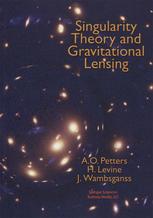

Most ebook files are in PDF format, so you can easily read them using various software such as Foxit Reader or directly on the Google Chrome browser.
Some ebook files are released by publishers in other formats such as .awz, .mobi, .epub, .fb2, etc. You may need to install specific software to read these formats on mobile/PC, such as Calibre.
Please read the tutorial at this link: https://ebookbell.com/faq
We offer FREE conversion to the popular formats you request; however, this may take some time. Therefore, right after payment, please email us, and we will try to provide the service as quickly as possible.
For some exceptional file formats or broken links (if any), please refrain from opening any disputes. Instead, email us first, and we will try to assist within a maximum of 6 hours.
EbookBell Team

0.0
0 reviewsThis monograph, unique in the literature, is the first to develop a mathematical theory of gravitational lensing. The theory applies to any finite number of deflector planes and highlights the distinctions between single and multiple plane lensing.
Introductory material in Parts I and II present historical highlights and the astrophysical aspects of the subject. Among the lensing topics discussed are multiple quasars, giant luminous arcs, Einstein rings, the detection of dark matter and planets with lensing, time delays and the age of the universe (Hubble’s constant), microlensing of stars and quasars.
The main part of the book---Part III---employs the ideas and results of singularity theory to put gravitational lensing on a rigorous mathematical foundation and solve certain key lensing problems. Results are published here for the first time.
Mathematical topics discussed: Morse theory, Whitney singularity theory, Thom catastrophe theory, Mather stability theory, Arnold singularity theory, and the Euler characteristic via projectivized rotation numbers. These tools are applied to the study of stable lens systems, local and global geometry of caustics, caustic metamorphoses, multiple lens images, lensed image magnification, magnification cross sections, and lensing by singular and nonsingular deflectors.
Examples, illustrations, bibliography and index make this a suitable text for an undergraduate/graduate course, seminar, or independent these project on gravitational lensing. The book is also an excellent reference text for professional mathematicians, mathematical physicists, astrophysicists, and physicists.